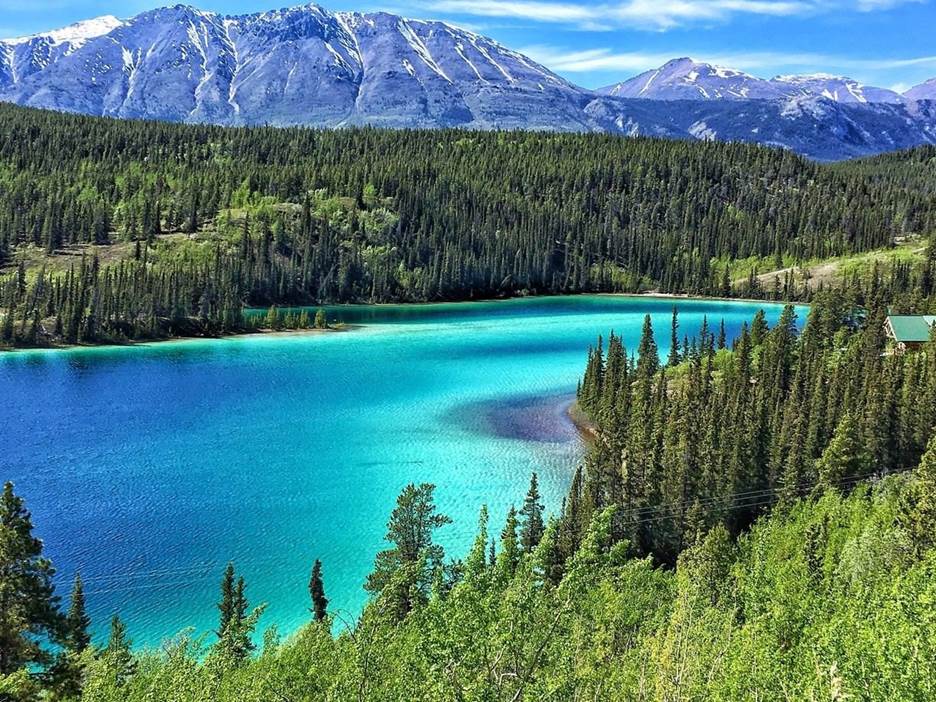Yukon Yonder
By Mowahid Hussain Shah

Tucked away in one of the remote corners of the globe, and largely inaccessible even to Canadians, is Yukon. To catch glimpses of it, coming by road from Skagway, Alaska, is to see God’s artwork, with its dazzling display of mountains and lakes. It is here where, during the 1890’s, at the height of the Klondike Gold Rush, men of fortune descended.

Yukon has a connection with contemporary American history and even an influence on it. To Yukon during the gold rush came Trump’s German grandfather, Friedrich Trump, who set up a bustling restaurant catering to gold miners, along with a flourishing hotel that reportedly also served as a house of ill repute. The foundations of the Trump family fortune were thus laid.
Yukon Territory adjoins British Columbia and Alaska. Alaska’s southeast tail is not far away. Skagway, Alaska, is 15 miles from the Canadian border and 50 miles from Yukon.
Skagway doesn’t have any doctors in its hospital, just three nurses. Anyone who is seriously ill is medevacked to Juneau, Whitehorse, or Seattle. Perhaps, an enterprising Pakistani doctor reading this would like to try his fortune there. Food is brought in by ship and delivered once a week, every Tuesday, with prices of grocery items high. However, salmon, a treat in the northeast US, is an everyday food item here. Fear of bears is real.
In these remote areas, the economy is dependent on cruise ships that dock there. In Skagway and Ketchikan, for example, there are ticketed tours of now defunct houses of ill repute (illegal since 1954.) In Ketchikan, Dolly’s House is notorious. Unusual to see an area which embraces its unsavory heritage. Perhaps, they are less hypocritical.
At Alaska’s southernmost tip, Ketchikan is Alaska’s fifth largest city. Home of the Tlingit and Haida Indian tribes, Ketchikan has the world’s largest collection of standing totem poles, Indian artwork carved and painted by hand from entire cedar trees, up to 50 feet in height, and generally depicting ancestral, cultural, or historical events and stories.
Then, there is the city of Seattle, Washington, named by settlers in honor of a popular Indian chief. Where once the Space Needle, built in 1962 for the World’s Fair, was resplendent as the tallest structure in Seattle and could be seen throughout the city, today it is dwarfed by skyscrapers that dominate the landscape.
In Seattle’s old Japantown is the Panama Hotel, where Japanese-Americans, in the wake of Pearl Harbor, deposited their possessions when they were involuntarily pushed into internment camps in 1942. These belongings, many never reclaimed after the war, are now on display; the hotel was designated a National Treasure in 2015. Similar paranoia, xenophobia, fear, anger, and mistrust marred America post-9/11. William Faulkner, American author (1897-1962), put it best: “The past is never dead. It’s not even past.”
Back in Yukon, to show how globalized the world has become, in a remote rest stop at Caribou Crossing, the vegetarian lunch option is dal chawal. In Lahore, 15 years ago, dal chawal was only 15 rupees a plate.
Yukon also demonstrates the amazing reach of Muslims, in that there is a real functioning mosque in its capital, Whitehorse, used for daily prayers and small meetings.

